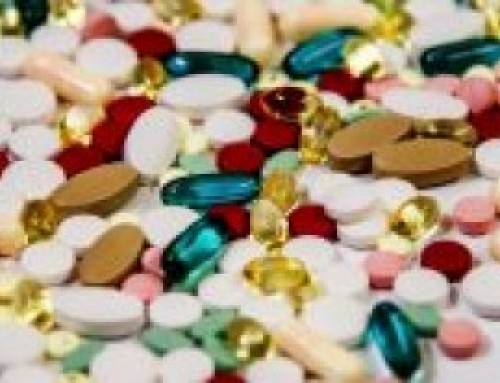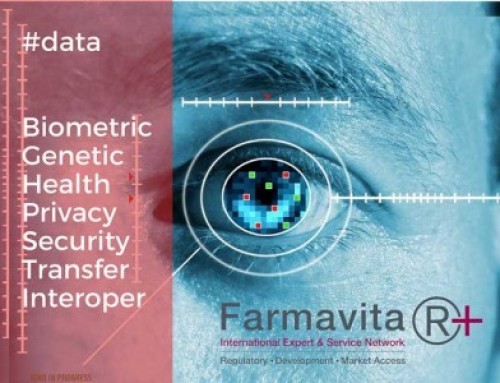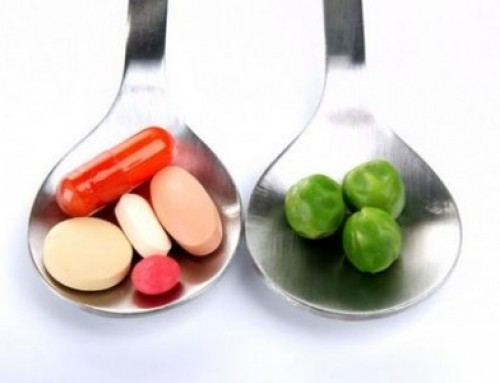Hospital in the Home (HITH) is the provision of hospital care in the comfort of the persons own home. In this patients are regarded as hospital inpatients and remain under the care of their treating doctor in the hospital, they receive the same treatment that they have been received in a hospital bed. Patients may be able to receive all their hospital care in HITH. Participation in HITH is voluntary – patients and their carers must agree to have their care provided at home. There are no additional charges to patients for being in HITH and it is available to public patients from the 43 participating public hospitals across the state.
Hospital in the Home: Concept and clinical guidelines
Shweta Kapoor*, Satyaendra Shrivastava,Darshan Dubey
* Correspondence
Columbia college of pharmacy, Tekari, Raipur, 07721266302
Email: Kapoorscope@gmail.com
Abstract
Hospital in the Home (HITH) is the provision of hospital care in the comfort of the persons own home. In this patients are regarded as hospital inpatients and remain under the care of their treating doctor in the hospital, they receive the same treatment that they have been received in a hospital bed. Patients may be able to receive all their hospital care in HITH. Participation in HITH is voluntary – patients and their carers must agree to have their care provided at home. There are no additional charges to patients for being in HITH and it is available to public patients from the 43 participating public hospitals across the state. A wide range of conditions and treatments are provided in HITH, the most common are intravenous antibiotic treatment of cellulitis, genito-urinary tract or respiratory tract infection, anticoagulant therapy and chemotherapy. This is totally a new concept for treating patient, which gives more satisfaction to patient as compare o hospital treatment. This paper tries to attract the attention of hospitals, doctors and nursing staff by including its details and required clinical guidelines.
Introduction
HITH is probably best established through a stand-alone unit within the hospital, with its own budget and staff. It has its own technologies, such as computerized pumps and peripherally inserted central catheters and is skilled in the use of pharmaceuticals at home. It has its own body of research, it is expert at assessing people for acute home-based care, with involvement of experts. It accepts patients from all other hospital units, services and disciplines. It is therefore a dangerous attribute in a modern hospital environment yet it is rapidly accumulating its own core of specialist knowledge. It is able to embrace specialist requirements through direct staffing of nurses with appropriate experience, or through the education of current staff. It is developing specific standards that will allow improvement in quality and benchmarking. HITH units should have nurse-administered, medically supervisor and attended care. Twenty-four-hour nursing and medical telephone support, with the ability to visit after hours, is mandatory. There should be clear lines of clinical responsibility and continuity within HITH, and proper link to the hospital and between it is requied. Even with all of these inputs, HITH will still offer care equivalent to traditional hospital care at a lower cost1,2. Future studies of hospital, HITH patients, examining costs and quality-of-life measures will acknowledge the additional advantages of HITH care. At present, the healthcare interventions suited to HITH are intravenous therapy of all types (including antibiotics, antifungals, antivirals, some chemotherapeutic agents, corticosteroids, inotropes and blood products) and acute anticoagulation. Acute rehabilitation, insulin initiation and some complex wound care are also included in some HITH programs. Although new applications will be found, it is important that HITH should adhere to the demonstrable substitution of hospital inpatient care and not establish intermediate care programs or duplicate current community services. To prove the efficacy and safety of HITH system several studies has been carried out. For example in Victoria hospital (Australia) in the home programme a survey was carried out to determine the satisfaction of a group of patients and carer. Sixty seven (67) patients admitted to the HITH unit from Dec 1994 until the end June 1998. Almost all responsers i.e. 66 stated in an interview that they will like to use the service again if the opportunity arose3. Another study carried out in Christ church (New Zealand) to compare the efficacy, safety and acceptability of treatment with intravenous antibiotics for cellulitis at HITH unit and in hospital. Outcome came from above study revealed that not only treatment of cellulitis requiring intravenous antibiotics can be safely delivered at HITH unit also patient’s satisfaction was found to be greater in patients who are treated in HITH unit4. This paper covers the HITH history, volunteers, benefits, working concept and clinical guidelines. So that the new concept can come in the knowledge of every one who is directly or indirectly dealing with public health.{mospagebreak}
History
HITH started in Victoria in 1994 as a pilot program. Hospitals were invited to apply to become a HITH provider and 43 hospitals were selected. Funding was initially provided by the Government to help establish the programs in public hospitals. Funding continues to be provided to participating hospitals as an incentive to provide the service in addition to funds provided through the normal inpatient payment (casemix).
Volunteers
Any public patient in one of the 43 participating hospitals can get the HITH treatment who is: assessed as being clinically suitable, has appropriate support in the home (a carer), have a suitable home environment, chooses to be treated in HITH or can be treated in HITH.
Working concept
Patients may be admitted into HITH in different ways, depending on their condition and treatment. Some patients may be admitted directly into HITH (either from the Emergency Department or their own home) or may first stay in hospital and then be transferred to continue treatment in HITH (this may be after surgery or after their condition has been stabilized). There are different models of HITH care, but in virtually all situations, the patient would be seen by a nurse or doctor at least once per day. If the patient requires allied health services, such as physiotherapy or speech therapy, this will also be provided. In some situations, patients may be requested to come into hospital to receive a component of their treatment. A number of the HITH programs provide access to HITH staff at nights and weekends. Some however will recommend that if there are any problems, the patient should present back at the hospital.
Benefits of HITH
Better management of hospital beds, more efficient use of resources and above all patient can get more satisfaction. In many situations HITH can be provided at a cheaper cost than hospital care (no capital or hotel costs).
Clinical guidelines for parenteral drug administration in HITH
All hospital-in-the-home (HITH) programs should develop clear precise policies and procedures applicable for parenteral (intravenous, intramuscular and subcutaneous) drug administration in the home care setting for nurses and or patients and their carers.
Written policies and procedures should specifically address the following parenteral drug administration areas: drug orders, checking of medications, administration of medications by nursing staff, administration of medications by patient or carer. In addition written policies and procedures should also address the following related areas:
1) HITH nursing staff
2) Storage and transportation of medications
3) Equipment storage and disposal
4) Anaphylaxis
5) Chemotherapy spill kits
6) Use and care of devices and appliances
7) DocumentationGeneral
HITH patient selection criteria are applicable including an assessment of the patient’s home environment as adequate and safe for patient management and administration of parenteral drug therapy. Considerations include the availability of electricity, water, a refrigerator, storage and a telephone. Specific requirements for parenteral drug administration in a HITH service, including consideration of differences between in-hospital and home environments are summarised below5.{mospagebreak}
- Drug orders
Written legible prescriptions by medical officers on approved prescription forms are dispensed by the pharmacy for individual patients in a HITH program as opposed to the supply of drugs to a hospital ward for the patient’s use. Written drug orders for home parenteral administration should comply with hospital parenteral drug administration requirements i.e include solution/medication, dosage, rate and/or volume, frequency and route. Verbal drug orders are accepted in emergency situations. Verbal orders should be followed by written prescription to the pharmacist, and written orders to the registered nurse, within 24 hours. Standing drug orders approved by the appropriate hospital committee may apply in some situations for HITH patients, these orders should be clearly printed on the medication chart6.
- Checking of medications
Medication is dispensed by the pharmacy in accordance with the Drug, Poisons and Controlled Substances Regulations. Also for patients in HITH programs the proper dispensing requirements must take into consideration like proper use of appropriate containers, packaging materials and the attachment of appropriate information including warnings for storage and expiry. In a HITH program a registered nurse may check and administer medications without an additional check by another healthcare professional. The registered nurse is still required to identify the patient, check the drug order and the medication label including the expiry date. Where the patient is confused or cognitively impaired in this case the patient identification should be confirmed with a responsible adult7.
- Administration of medications by nursing staff
In the home setting at the time of preparing and administering intravenous medications good aseptic technique should be followed. These include hand washing (with an antiseptic solution) as a minimum requirement before and immediately after any clinical procedures. Gloves should be available and in some cases gowns, masks and/or goggles may be required. Where admixing is required in the patient’s home a clean environment/surface should be selected, swabbed with appropriate antiseptic solution and an aseptic technique employed. After preparation the intravenous admixture solution should be adequately labeled in circumstances where the solution is to be infused over time. The intravenous solution/medication should be inspected for particulate matter, precipitation or discoloration and the container should be inspected for cracks, leaks or punctures. Injection ports should be swabbed with appropriate antiseptic prior to any procedure. Appropriate monitoring and precautions are to be undertaken during drug administration (e.g. to detect extravasations, adverse or allergic reactions) and any nursing interventions documented. Appropriate precautions are to be taken to minimize occupational exposure especially to hazardous materials. Appropriate disposal policies are to be followed for sharps, hazardous material and blood contaminated equipment8.
- Administration of medications by patient or carer
Intravenous drugs should only be administered by patients or carers when an educational program has been undertaken. Their competency to safely administer intravenous drugs and handle contingencies has been properly assessed and should be appropriately documented. Comprehensive written instructions on all pertinent aspects and information regarding intravenous drug treatment are to be supplied to the patient or carer. Infection control procedures including sound aseptic technique (e.g. hand washing, gloves) are to be followed when preparing and administering intravenous medications in the home setting. Appropriate precautions are to be taken to minimize exposure especially to hazardous material. Appropriate disposal policies and procedures are to be followed for sharps, hazardous material and blood spills. Drug administration is to be appropriately documented and shown to the medical officer at review and the visiting nurse on home visits9.{mospagebreak}
- HITH Nursing Staff
Staff administering parenteral medication in HITH programs should have appropriate qualifications (i.e. minimum Registered Nurse, Division 1) and be certified as having basic competencies or demonstrate clinical competency to administer parenteral therapy. These should include a detailed understanding of:
- The technology used (access infusion devises, ports, pumps, and flow control devices)
- . Insertion of intravenous lines.
- ·Cannula site care and dressings.
- Maintenance of access devices, pumps, ports and catheters.
- Procedures to ensure line patency.
- Administration techniques and admixing of intravenous solutions.
- Infection control procedures.
- Demonstration of annual drug calculation competency is required for all nursing staff administering parenteral medication.
Additional competencies may be required for some HITH services eg chemotherapy administration. All staff administering parenteral medication should be familiar with and routinely follow individual HITH program procedures7.
- Storage and Transportation of medications
Minimum storage and transport requirements should be developed for drugs requiring storage at room temperature, drugs requiring refrigeration, drugs requiring freezing and hazardous materials. The patient, carer or a registered nurse should transport drugs safely and appropriately. Drugs should be stored safely and appropriately either by the patient of the HITH program or a registered nurse. The medication must be kept in a suitable container in a safe position out of the reach of children6. Drugs requiring refrigeration should be stored in the body of the refrigerator. The patient should be educated on the correct storage of the medication. The nurse should assess the facilities available for the storage of drugs in the patient’s home and ensure their suitability9.
- Equipment Storage and Disposal
It is essential that policies and procedures be developed and adhered to in relation to the safe storage and disposal of all parenteral drug administration equipment. These policies and procedures should comply with Occupational Health and Safety Regulations and should include information on:
- Minimum storage requirements for needles, sharps, anaphylaxis kits etc.
- The supply of appropriate non-permeable tamperproof containers for the disposal of blood contaminated and/or sharp items eg needles/stylets, surgical blades and plastic syringes.
- The use of neutralising or decontaminating solutions.
- The availability of non-permeable tamperproof containers for the disposal of hazardous wastes in the home setting (e.g. chemotherapy, blood/fluid spills).
- Use and care of devices and app1liances
Polices and procedures should cover staff, patient and carer information pertaining to:
- The use of vascular access and infusion control devices in HITH patients,
- The care of catheters, infusion pumps, line flushing procedures and any specific infusion systems eg interlink needless infusion system.
- A scheduled maintenance program should be included for all electrical Equipment6.{mospagebreak}
- Documentation
A patient’s allergy status must be recorded in a prominent area on the medication chart, ideally using an “Allergy Alert” label where relevant. Drug administration must be as close to the prescribed administration time as possible. The actual time of dose was administered should be recorded on the drug administration chart and where significant variations occured between the prescribed and administered time the medical practitioner must be notified about this variation. All reactions, observations and actions taken are to be recorded in the patient’s medical record e.g. allergies, sensitivities, phlebitis and extravasations. Incident reports (like injuries, spills or misadventures) along with any and forwarded to the appropriate hospital departments9.
Conclusion
HITH is a system in which patients are getting acute hospital care. This is a beneficial system to treat older patients as they are getting homely environment. Although HITH units have been established for more than 12 years ago, yet in this short time important work of international standard has shown that HITH is safe, effective, acceptable and efficient alternative to acute hospitalization for certain patients and conditions.
References
1.Balinsky W. Home care current problems and future solutions. San Francisco: Jossey-Bass Publishing, 1994.
- Montalto M, Watts J. Considering the cost of hospital in the home care. Report to the Victorian Department of Human Services. Melbourne: Centre for Health Program Evaluation, 1998.
- Michael M. Patient’s and carer’s satisfaction with Hospital in the home care. International Journal for Quality in Health Care 1996; 8: 243-251.
- Paul C, Les T and Martin T, Randomised controlled trial of intravenous antibiotic treatment for cellulitis at home compared with hospital . BMJ 2005;330:129
- Holder C, Alexander J. A new and improved guide to IV therapy. Am J Nurs 1990; 90: 43- 46.
- Coker M, Lampert A. Teaching checklist for home infusion therapy. ONF 1990; 17: 923- 926.
- Sheldon P, Bender M. High-technology in home care an overview of intravenous therapy. Comm Health Nurs Home Care Nurs 1994; 29:507-519.
- Williams DN, Rehm SJ, Tice AD, Bradley JS, Kind AC, Craig W. Practice guidelines for community-based parenteral anti-infective therapy. Clin Infect Dis 1997; 25:787-801.
- Intravenous Nurses Society. Intravenous Nursing Standards of Practice. J Intravenous Nurs 1998; 21(suppl 1):1-90





Leave A Comment